ABOUT BATU CAVES
Batu Caves is a popular tourist destination located in Selangor, Malaysia, just outside of the capital city of Kuala Lumpur consisting of colorful Hindu temples and statues nestled among limestone cliffs and caves, which are said to be over 400 million years old. It is easy to see why this area draws such a crowd. Visitors can climb the 272 steps to reach the main cave, Temple Cave, which is home to several Hindu shrines and temples.
The natural beauty and the man-made monuments are stunning and impressive, and they work together to create an incredible experience.
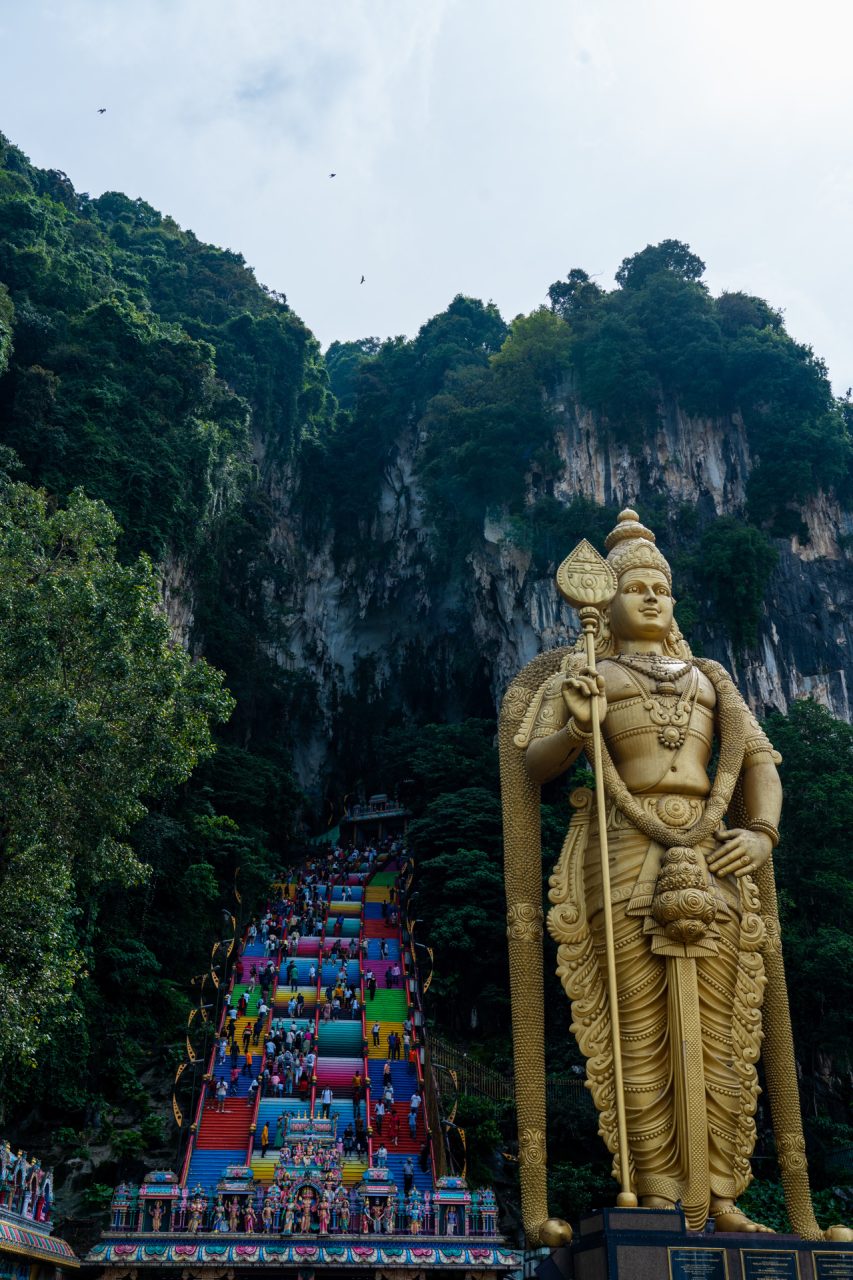
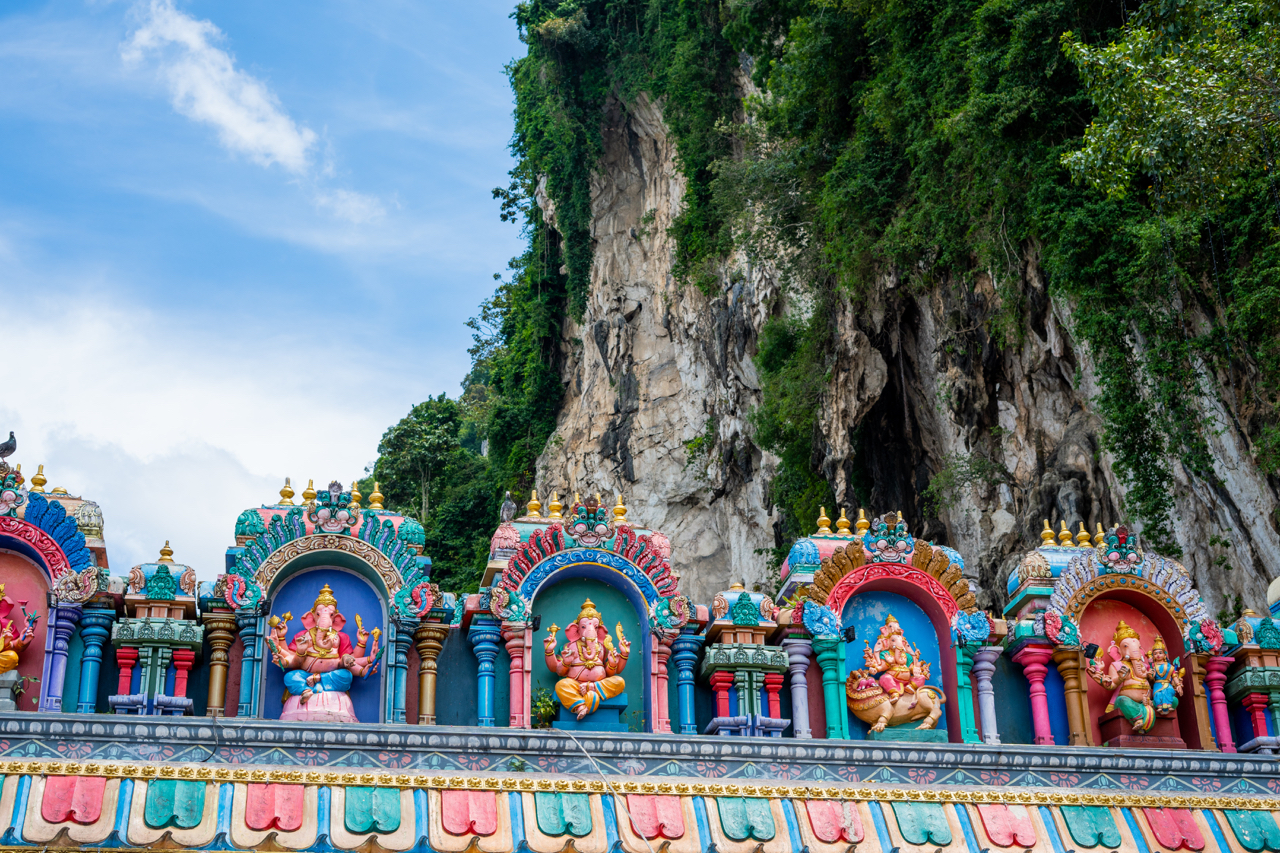
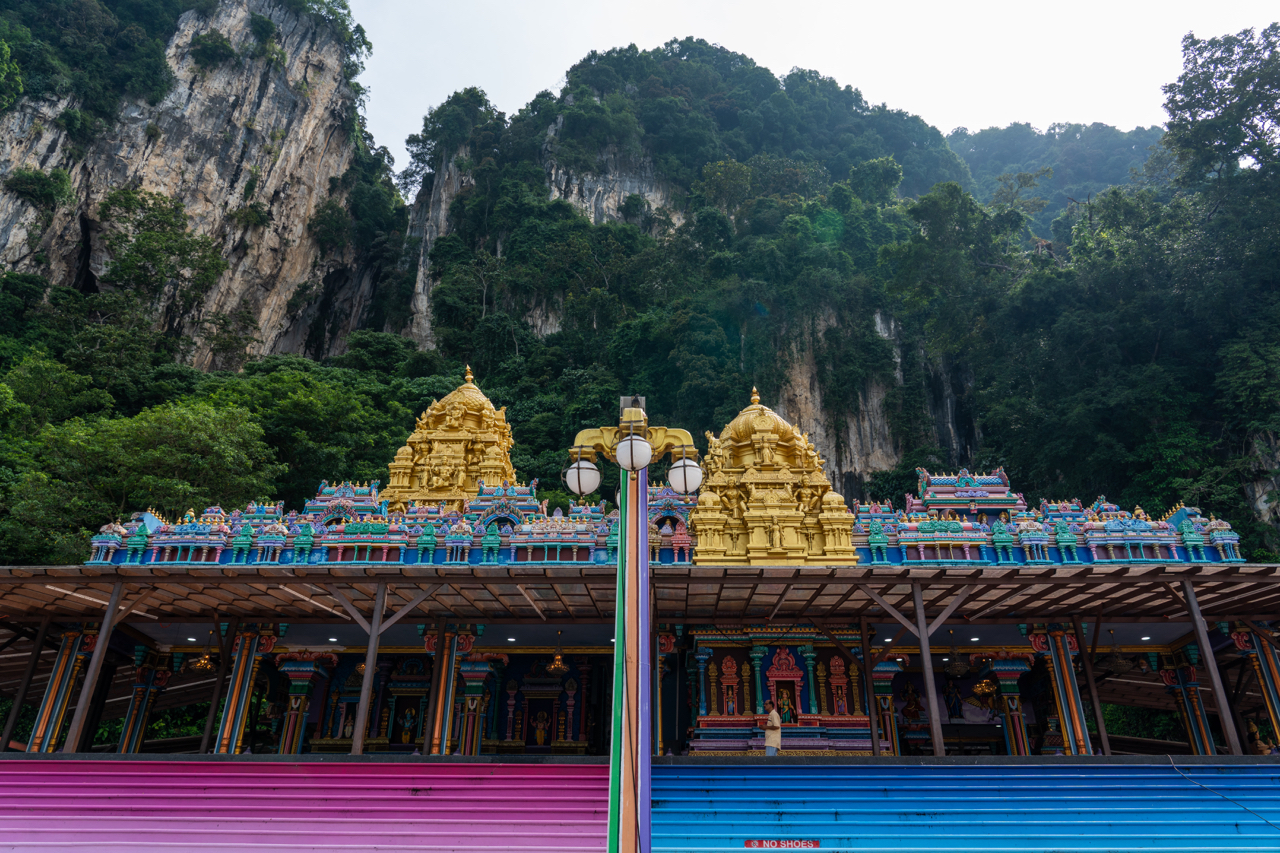
GETTING TO BATU CAVES FROM KUALA LUMPUR
Batu Caves is easily accessible from downtown Kuala Lumpur via the KTM Komuter train, which will drop you off directly outside. Train tickets cost around 2.60 MYRD (0.60 USD) one way.
Alternatively, visitors can take a taxi or ride-sharing service from the city center, or book a tour that includes Batu Caves, although these will be more expensive options.
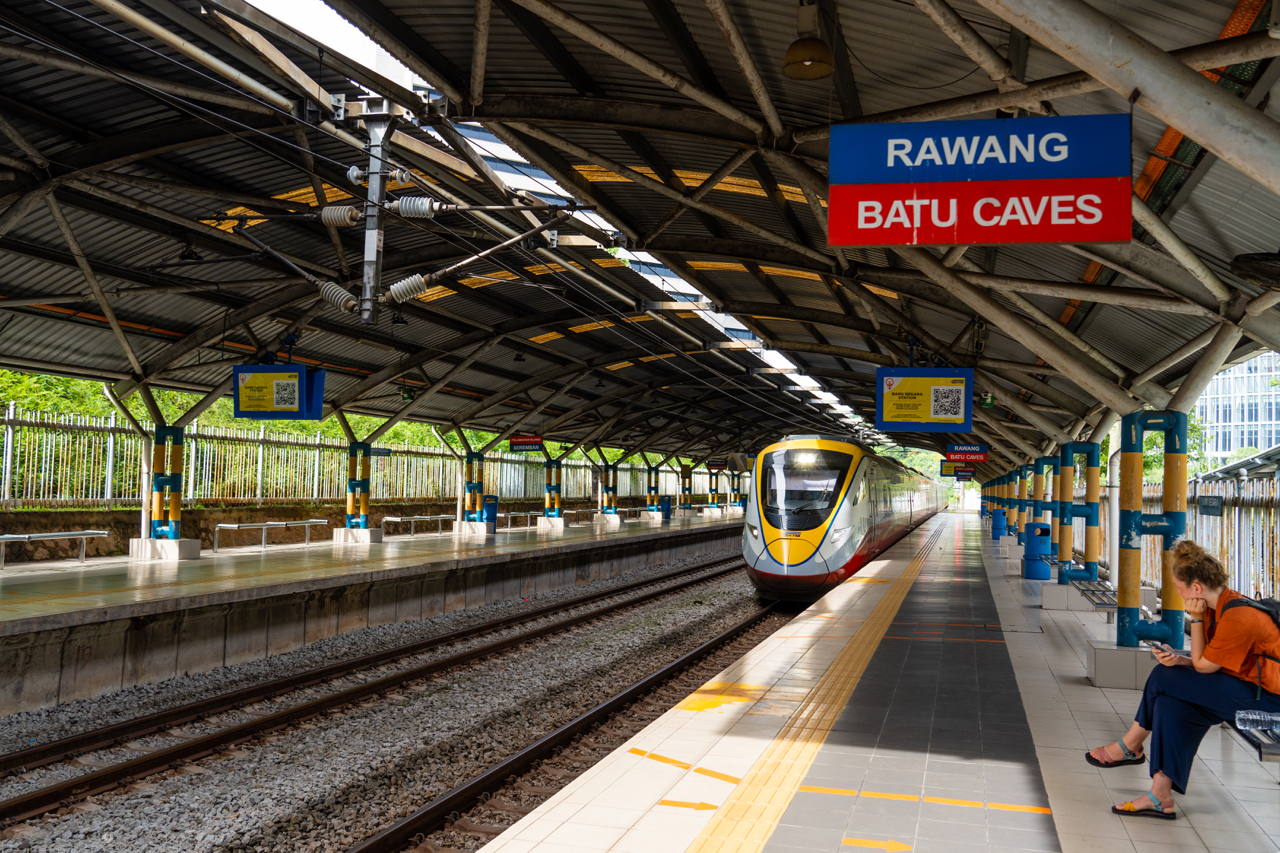
COST
Admission to the area is free, although there are additional fees for certain optional activities and attractions within the complex.
The bathrooms on site charge a 0.50 MYR (0.10 USD) fee, and certain caves have an extra fee. Cave Villa costs 15 MYR (3.40 USD) for foreigners and 7 MYR (1.60 USD) for Malaysians. Ramayana Cave costs 5 MYR (1.15 USD) for all visitors.
However, the biggest and most popular cave, Temple Cave, which you enter via the tall colorful steps is free. And there are other free temples within the complex.
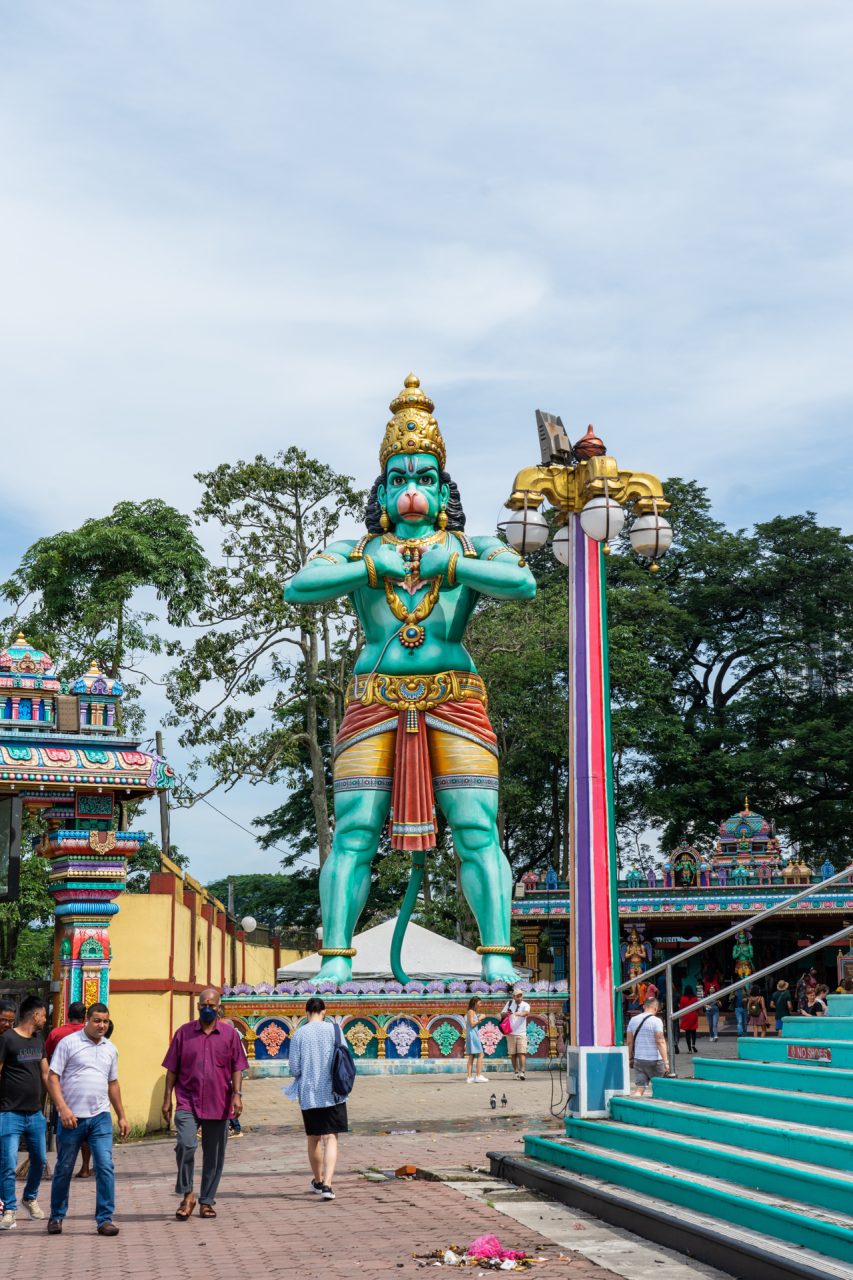

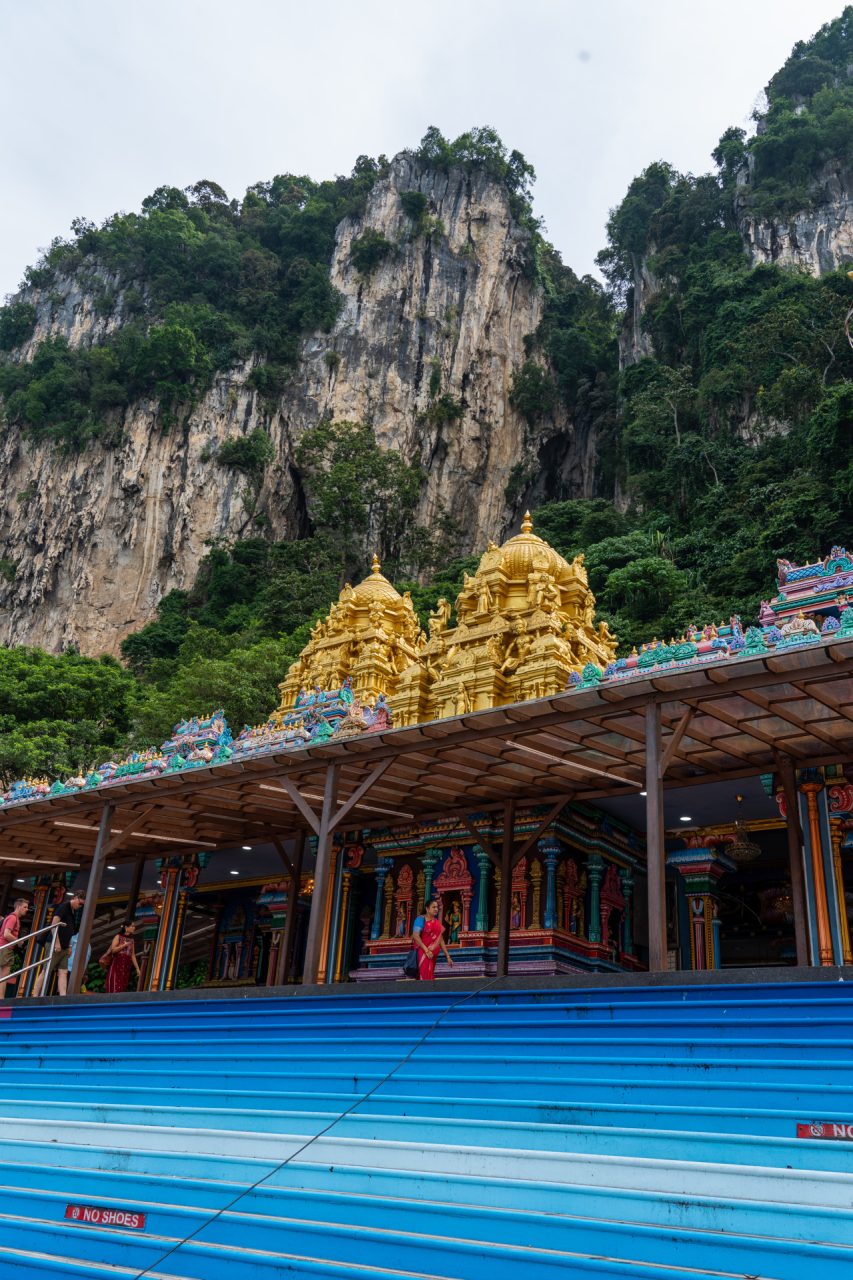
DRESS CODE
Visitors to Batu Caves are expected to dress modestly out of respect for the site’s religious significance. Women are required to wear bottoms that cover their knees. If your attire is deemed inappropriate, you may be asked to cover up with a sarong or scarf, which can be purchased at the bottom of the stairs for 15 MYR (3.40 USD).
You will also be asked to remove your shoes when entering certain temples. However, you (thankfully) don’t need to remove them for the stairs up to Temple Cave.

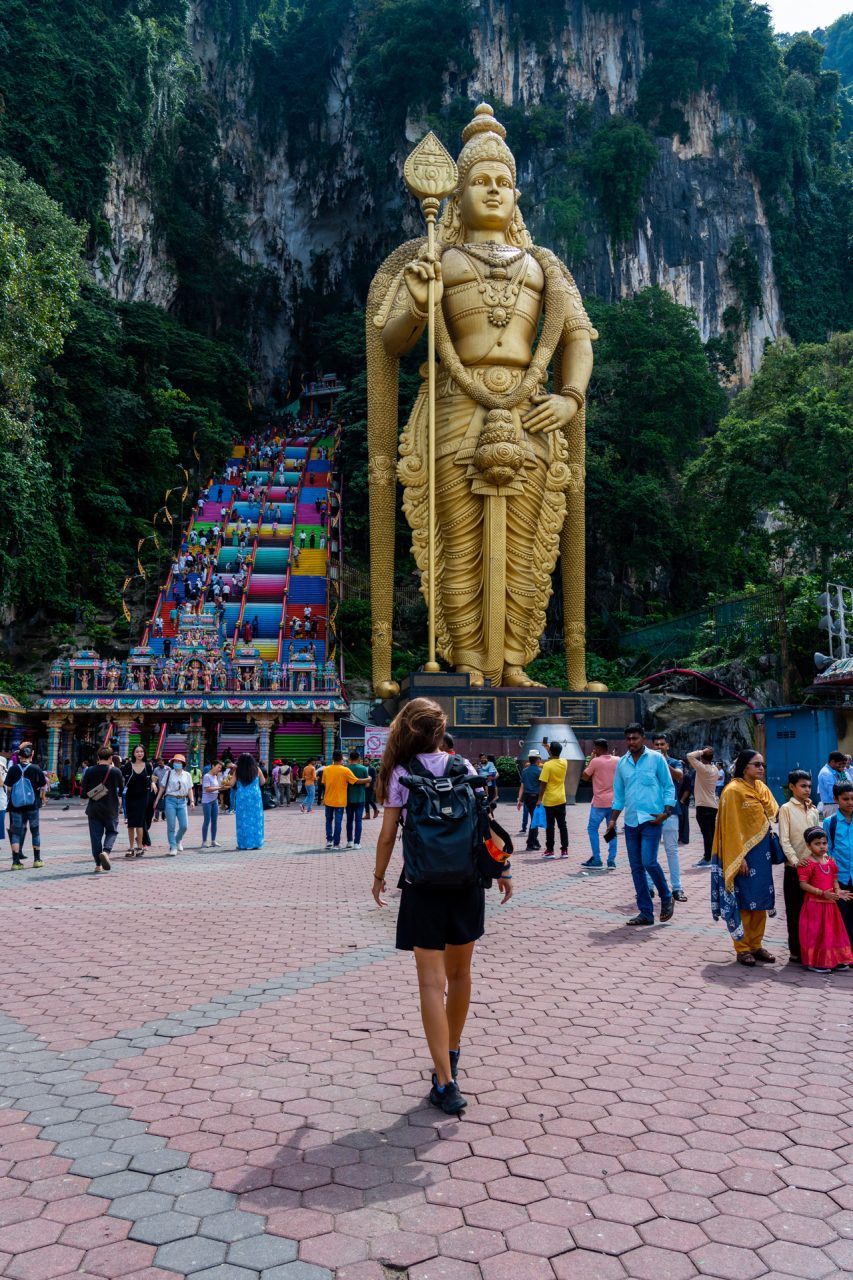
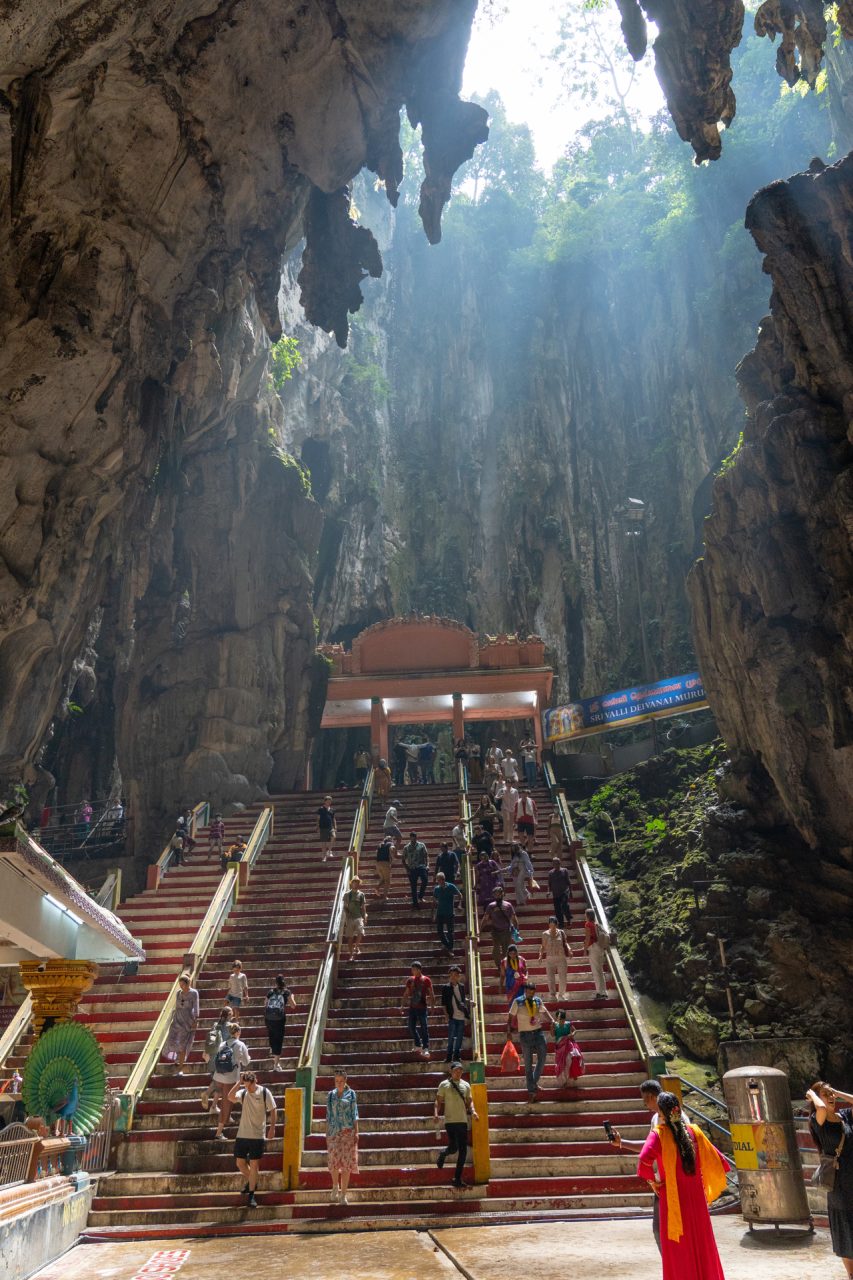
RELIGIOUS SIGNIFICANCE
Batu Caves is an important religious site for Hindus in Malaysia. The complex is dedicated to Lord Murugan, a Hindu deity who is revered as the god of war and victory. At the entrance to the caves is an impressive 140 feet tall statue of Murugan, taller than Christ the Redeemer in Bolivia, which is 125 feet including its pedestal.
Shockingly, this is only the 2nd tallest of the god Murugan, and the 7th largest statue of a Hindu deity overall! It’s an impressive and almost dizzying sight to behold.
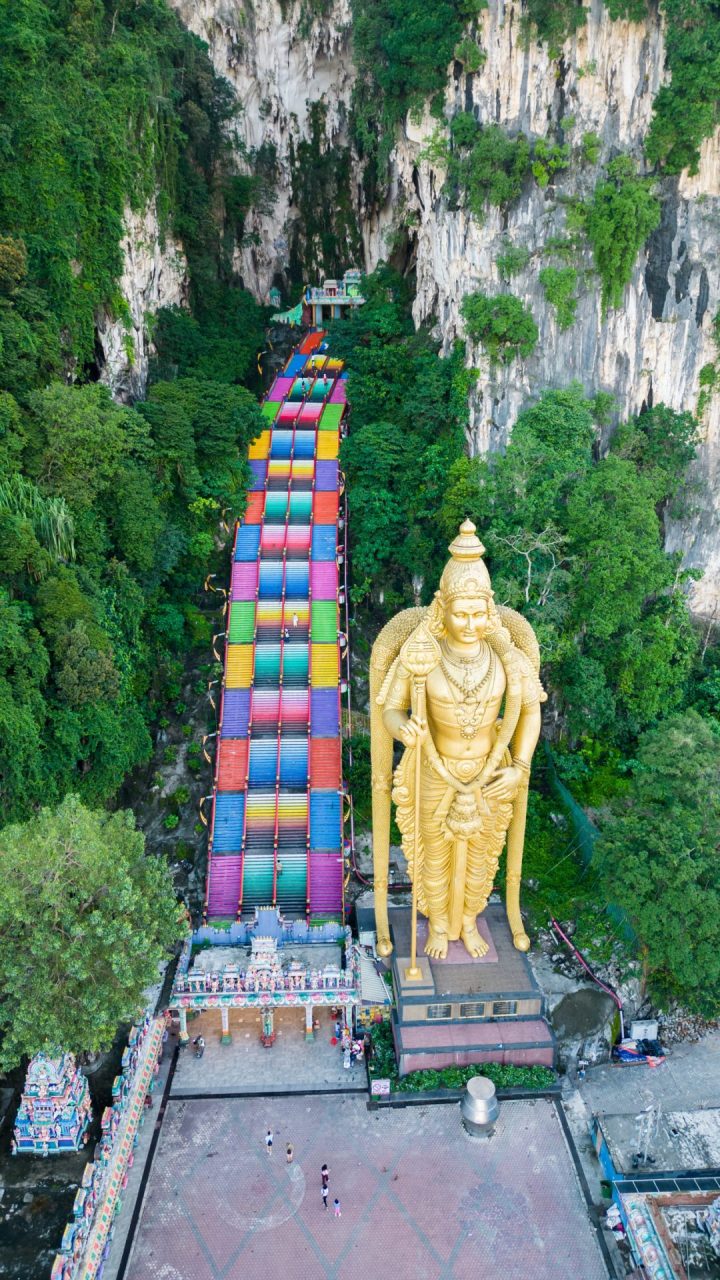
WILDLIFE
Batu Caves is also home to a variety of animals, including macaque monkeys, birds, and bats.
Visitors should be careful with their belongings around the monkeys, as they are mischievous and will often try to snatch food or other items from unsuspecting tourists.
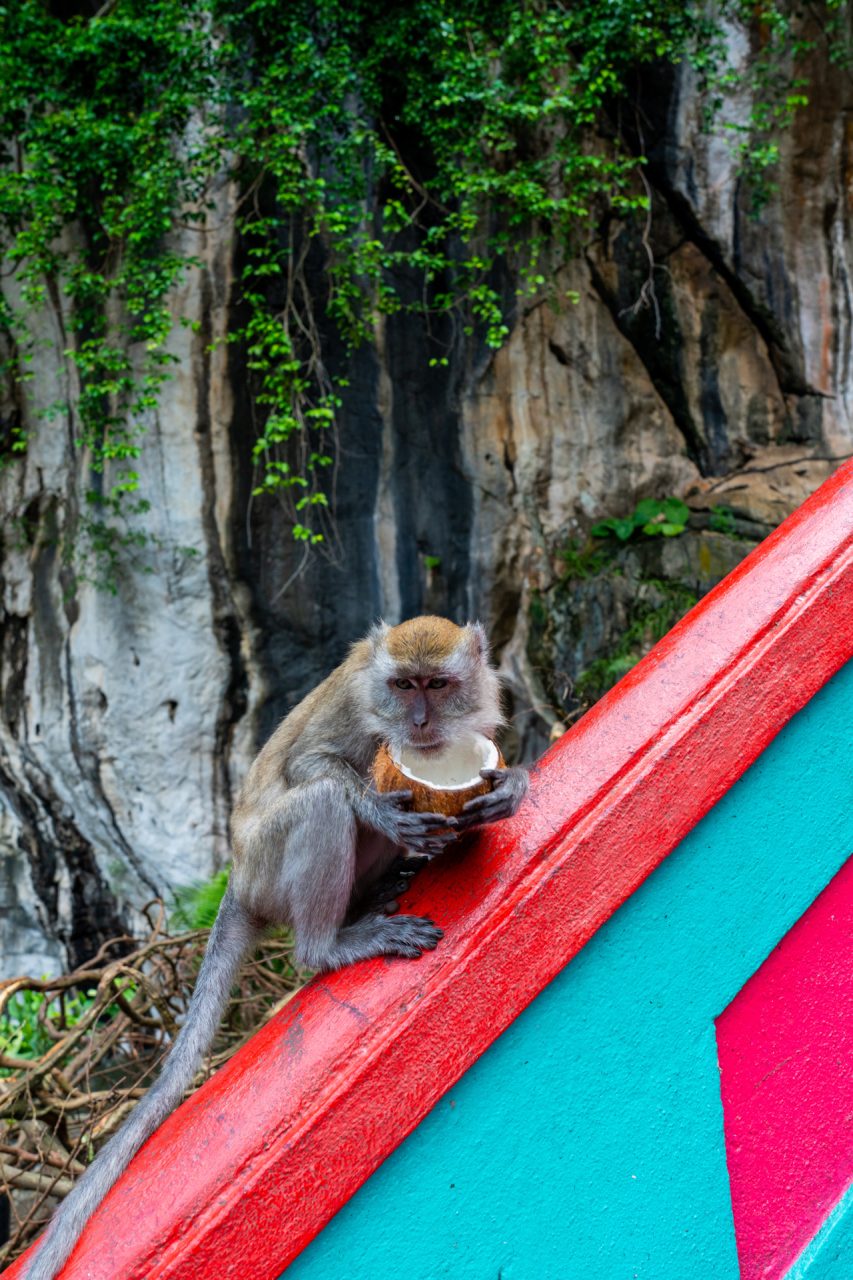

People throw seeds to the pigeons in the area, keeping them nearby and quite fearless of people. There is an abundance of these birds, and they swoop quite close so be careful and consider wearing a hat or scarf to keep off the poop!
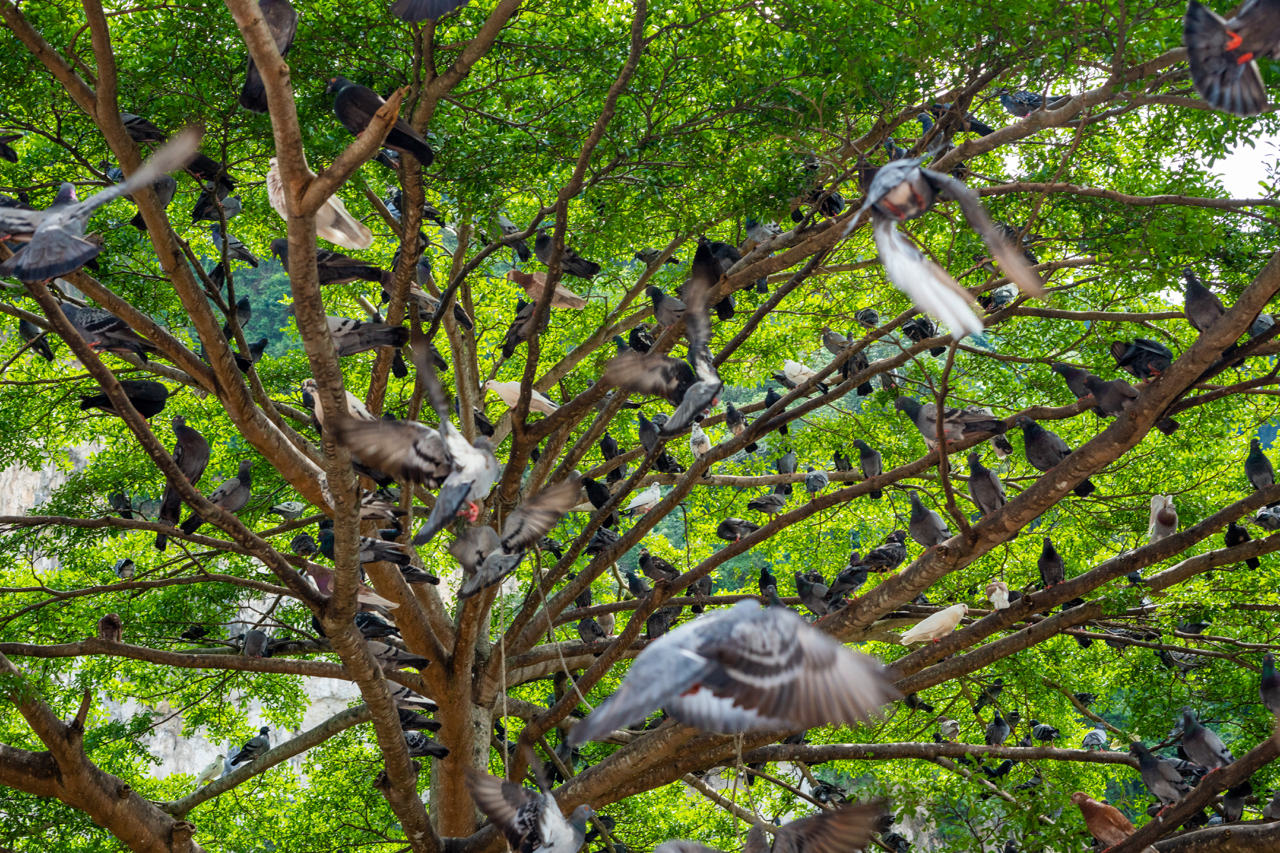
HOLIDAYS
Our first visit to the caves happened to be Labor Day, a federal holiday in Malaysia. It was extremely packed with both tourists and locals. You can expect a larger than normal crowd on any public holiday.
However, there are two important Hindu holidays that are celebrated at the caves each year: Thaipusam and Deepavali. You can expect to find it even busier on these days, but it may be worth it to witness one of these prominent celebrations.
Thaipusam is a festival celebrated by devotees in honor of Lord Murugan (who the Batu Caves statue depicts). The caves come alive with a vibrant procession, as thousands of devotees embark on a pilgrimage, carrying kavadis (ornate structures) adorned with flowers and peacock feathers. Thaipusam is celebrated on a different day each year, between late January and early February.
Deepavali, also known as the Festival of Lights, marks the triumph of light over darkness and good over evil. The caves are illuminated with beautiful oil lamps, creating a mesmerizing ambiance. Devotees gather to offer prayers, exchange gifts, and partake in festive feasts. Deepavali is celebrated on a different day each year, between late October and early November.
Despite the potential for crowds, these holidays offer a unique opportunity to witness and experience the rich cultural traditions of the Hindu community in Malaysia. So if you’re willing to brave the crowds, these holidays can be a great experience!

We were able to witness a beautiful and colorful celebration that lead into one of the temples on the Labor Day holiday we went on, but you can expect to find even more colorful celebrations during the Hindu holidays.
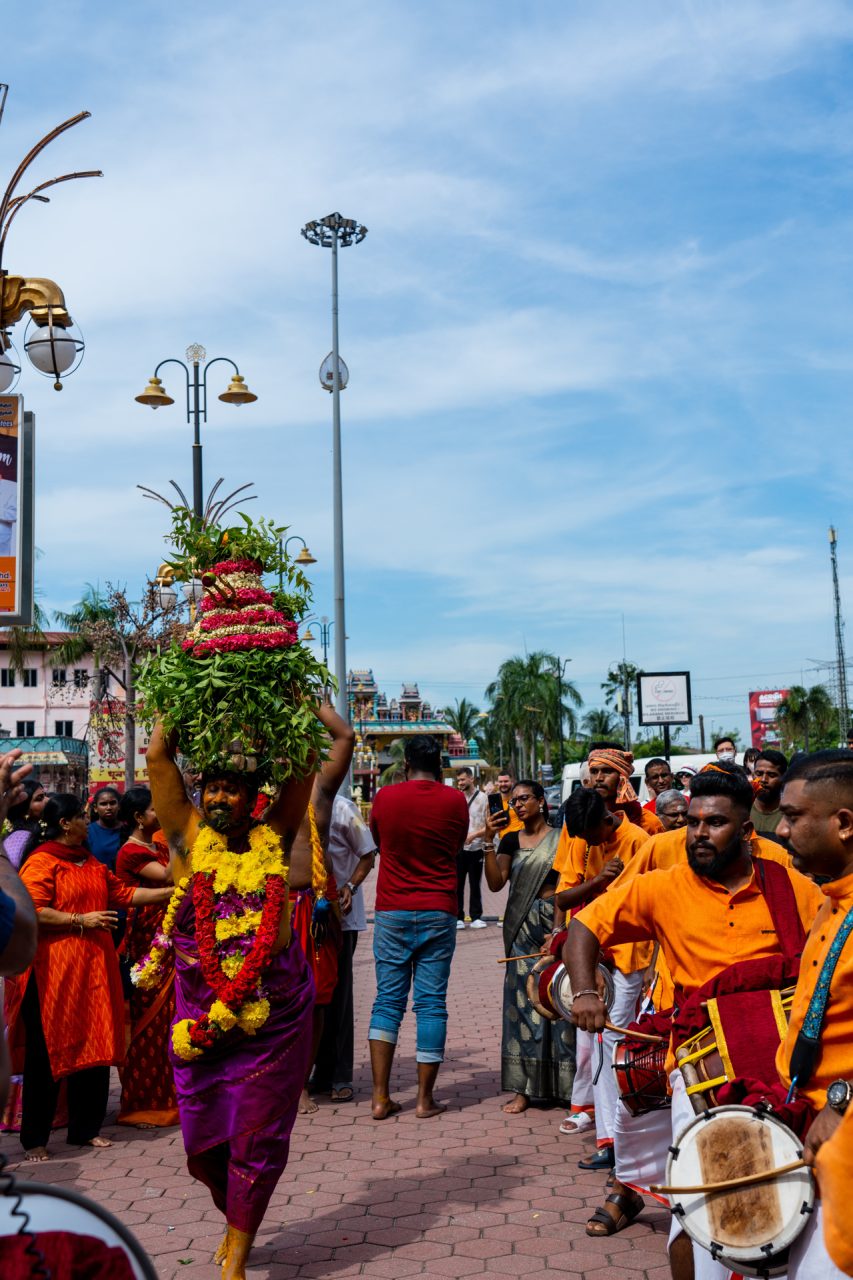
BEST TIMES TO VISIT
Batu Caves is open daily from 7:00am to 9:00pm. To enjoy Batu Caves at a more relaxed pace with far fewer people, we recommend getting there early in the morning, or in the evening on a non-holiday weekday.
On our second visit, we took the earliest train there, arriving around 7:30am. It was much quieter than our first visit, and we were able to go up the stairs slowly without many people around. We also found it more pleasant to avoid the hot mid-day sun.
The evenings are also a great time to go, as you can catch the sunset while avoiding the crowds & the heat of the afternoon.
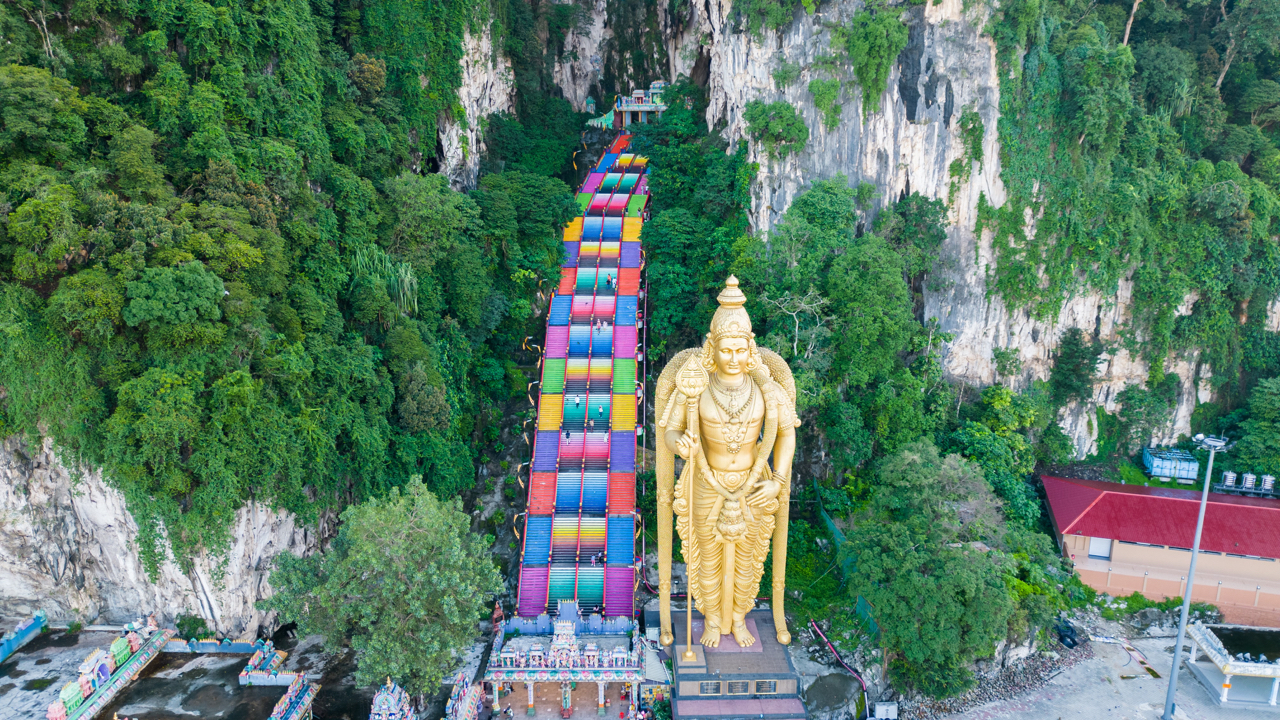
The monkeys were much more interactive and curious with us in the morning, with fewer people around. We have heard that they are less prevalent in the evenings.
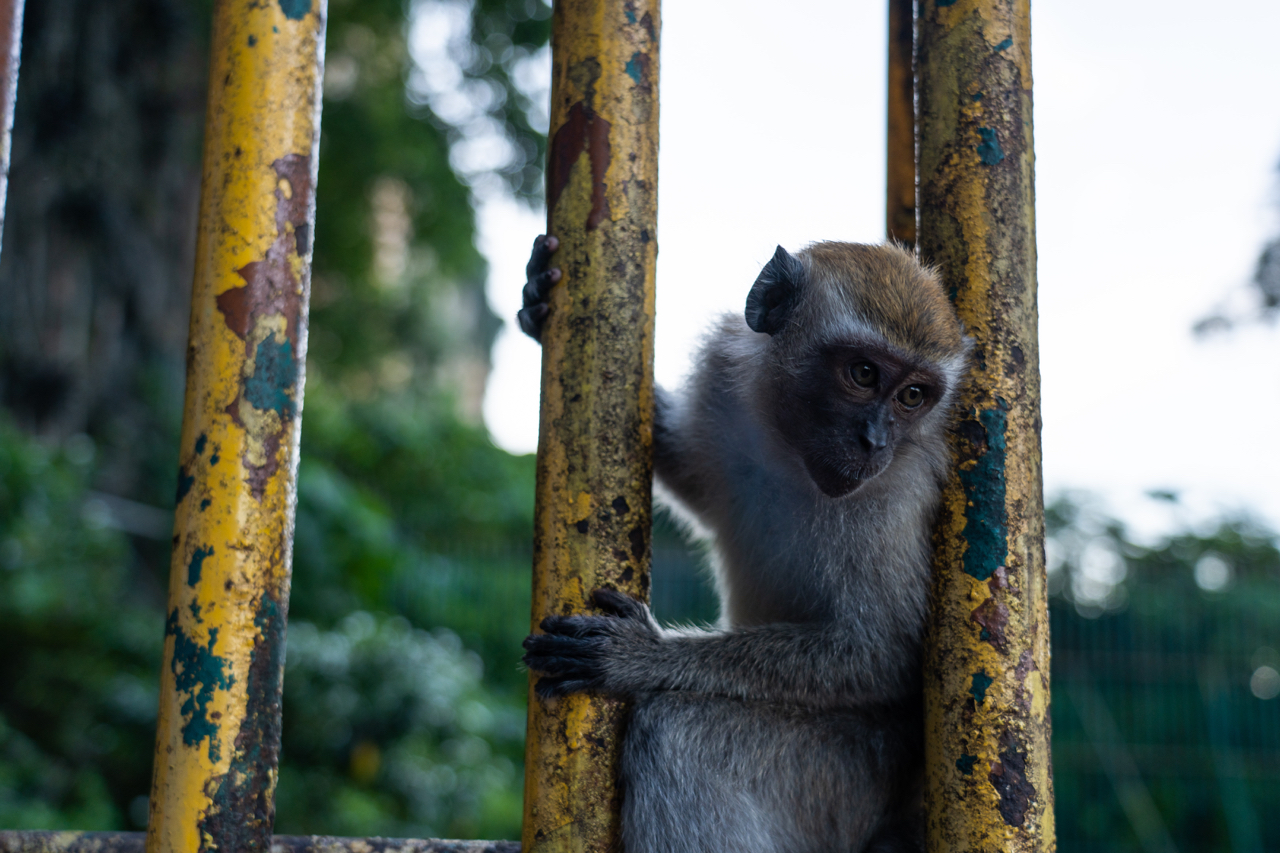

Batu Caves is a gorgeous and fascinating destination that offers a unique look into the religious and natural history of Malaysia. You can easily enjoy a free or very inexpensive day here, taking in the natural and man-made beauty of the area. We recommend visiting early in the day both to beat the crowds and to avoid the heat.
We hope you enjoy it as much as we did!
